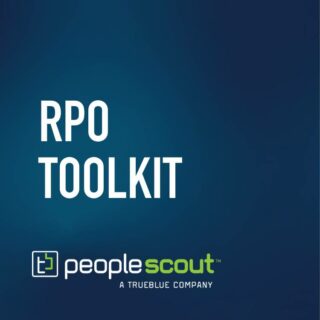According to U.S. Census data, there are 49.2 million individuals age 65 and older living in the U.S., accounting for 12.4 percent of the total population. The aging Baby Boom population and increased life expectancy in the U.S. have created a need for more healthcare professionals. In fact, the Bureau of Labor Statistics projects that healthcare occupations will grow 18 percent from 2016 to 2026, much faster than the average for all occupations, adding nearly 2.3 million new jobs to the economy.
Challenges in Healthcare Recruiting
The healthcare industry faces widespread talent gaps and shortages that are expected to grow worse over the coming years. A study conducted by the Association of American Medical Colleges’ Center for Workforce Studies revealed there will be 45,000 too few primary care physicians—and a shortage of 46,000 surgeons and medical specialists—in the next decade. Beyond clinical and medically trained professionals, the healthcare industry is also facing a shortage of non-clinical workers such as food service workers, facility maintenance staff and security guards.
The healthcare turnover rate exceeds 19 percent, further exacerbating the talent shortage and skills gap issues prevalent in healthcare, and making it more difficult for healthcare organisations to hold onto their top talent. So, how can organisations overcome these challenges in healthcare recruiting to find the talent they need? Below, we list six strategies to optimise healthcare recruiting practices in the face of these challenges.
Technology and Healthcare Recruiting
The rise of talent acquisition technology means that healthcare organisations have new and powerful tools for healthcare recruiting. Advances in technology not only make recruiting easier, but technology can also help make healthcare recruiting more cost-effective by improving costly time-to-fill metrics, reducing agency spend and streamlining the hiring process.
In addition to improved metrics and efficiency, technology can help healthcare organisations meet candidates where they are—on their mobile devices. More and more, candidates are using their mobile devices in the job hunt. In fact, 89 percent of candidates think that their mobile devices play a critical role in the job hunting process. Talent acquisition technology can help healthcare organisations offer a more mobile-friendly job search and application process to capitalise on this trend.
Improve Employer Branding
Whether candidates are recent graduates or seasoned professionals, the modern job hunter is likely to research prospective employers before applying to or accepting job offers. To increase the number of candidates accepting offer letters, healthcare organisations need to make sure their employment brand is positive. One of the best ways of doing this is by highlighting company culture and benefits.
For example, healthcare organisations can illustrate their culture by telling compelling stories about their workplace and employees.
Healthcare providers can also attend in-person employer branding activities, like maintaining a presence at local health fairs and sending talent teams to job seeker events at local medical and nursing schools.
Improve Benefits
The healthcare industry has become more competitive when it comes to attracting the best and most qualified candidates to fill positions. To get an edge over competitors, healthcare organisations need to become more innovate when it comes to compensation, benefits and flexible work environments.
Healthcare organisations need to look for ways to implement policies around flextime and telecommuting where it makes sense and talk to potential candidates about the benefits that matter most to them. Some candidates will prefer traditional benefits packages, but others might prioritise opportunities in learning and development, mentoring and career growth.
According to Barkley Davis, senior director of physician recruitment at LifePoint Hospitals, debt relief is the top priority for nearly all new physicians, and hospitals should explore new types of financial incentives beyond just salary. For example, LifePoint offers some doctors monthly stipends if they accept a job offer while they’re still in training—building employee loyalty months before these new hires are even on the job. Other healthcare organisations are attracting talent by experimenting with new types of teams and scheduling models to meet staffing needs while offering greater flexibility to employees.
Create Candidate Pipelines
Being proactive is one of the keys to success in healthcare recruiting. Healthcare organisations should work towards building strategic talent pipelines that cover both regional and national talent pools. According to the American Hospital Association, partnering with national and state job boards, public health departments, professional societies, universities, colleges, academies and high schools is a good way to develop comprehensive talent pipelines for healthcare recruiting.
Healthcare organisations can also emphasise diversity recruiting as a priority, not only to demonstrate a commitment to better serving the community, but also to ensure sufficient talent for candidate pipelines in the coming years.
Utilise Innovating Sourcing Methods
With the current healthcare talent gap, organisations need to source talent from a diverse range of places. A skilled RPO provider will have their hands on the pulse of the healthcare talent landscape and will be able to source top level talent from a variety of sources such as veterans transitioning into civilian employment.
When it comes to staffing for healthcare, veterans have the training, discipline and work ethic to make great hires. An RPO provider with a long and proven track record of veteran hiring can help healthcare organisations find quality candidates to help bridge the talent gap.
Think Long-term in Healthcare Recruiting
As a healthcare organisation becomes better and more adept at recruiting, they may find great candidates that are not a fit for current open positions but could be good potential additions in the future. Healthcare organisations should place top candidates into a talent pool and make sure to communicate with them on a regular basis to keep them informed of new positions that could be a better fit for their skills.
Ignoring, overlooking or not providing proper communication to good talent in the hiring process can leave a poor impression on individuals, thereby negatively impacting a healthcare organisations’ employer brand. What’s more, 33 percent of job hunters are likely to share their negative experiences with companies on social media.
This, in turn, can come back and harm a company’s reputation and employer brand. Thinking long-term makes sure that hiring teams acknowledge the importance of initiating, nurturing and maintaining an ongoing relationship with top candidates and the overall talent pool. These talent pools will help organisations find great talent fast when they are looking to fill an important position in the future.
Conclusion
With many older healthcare workers retiring, healthcare organisations need to keep pace with industry recruiting trends and make the much-needed changes to their staffing models to meet the demands of the new and still emerging healthcare talent landscape.
For healthcare recruiting to be successful organisations need leaders that understand the benefits of the above-described tips. Integrating these tips into a healthcare recruiting strategy will result in a workforce with lower turnover rates, higher job satisfaction and improved ROI for recruitment efforts.




